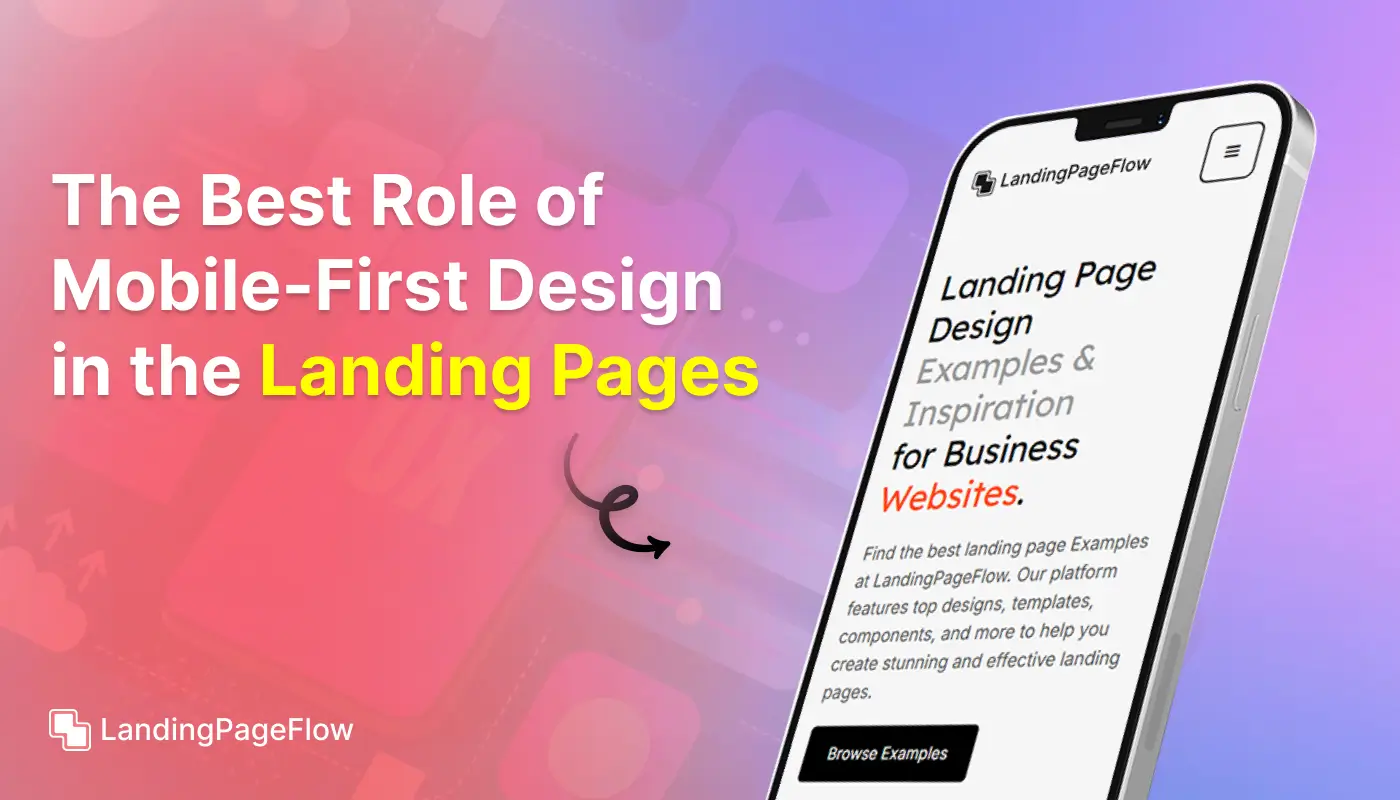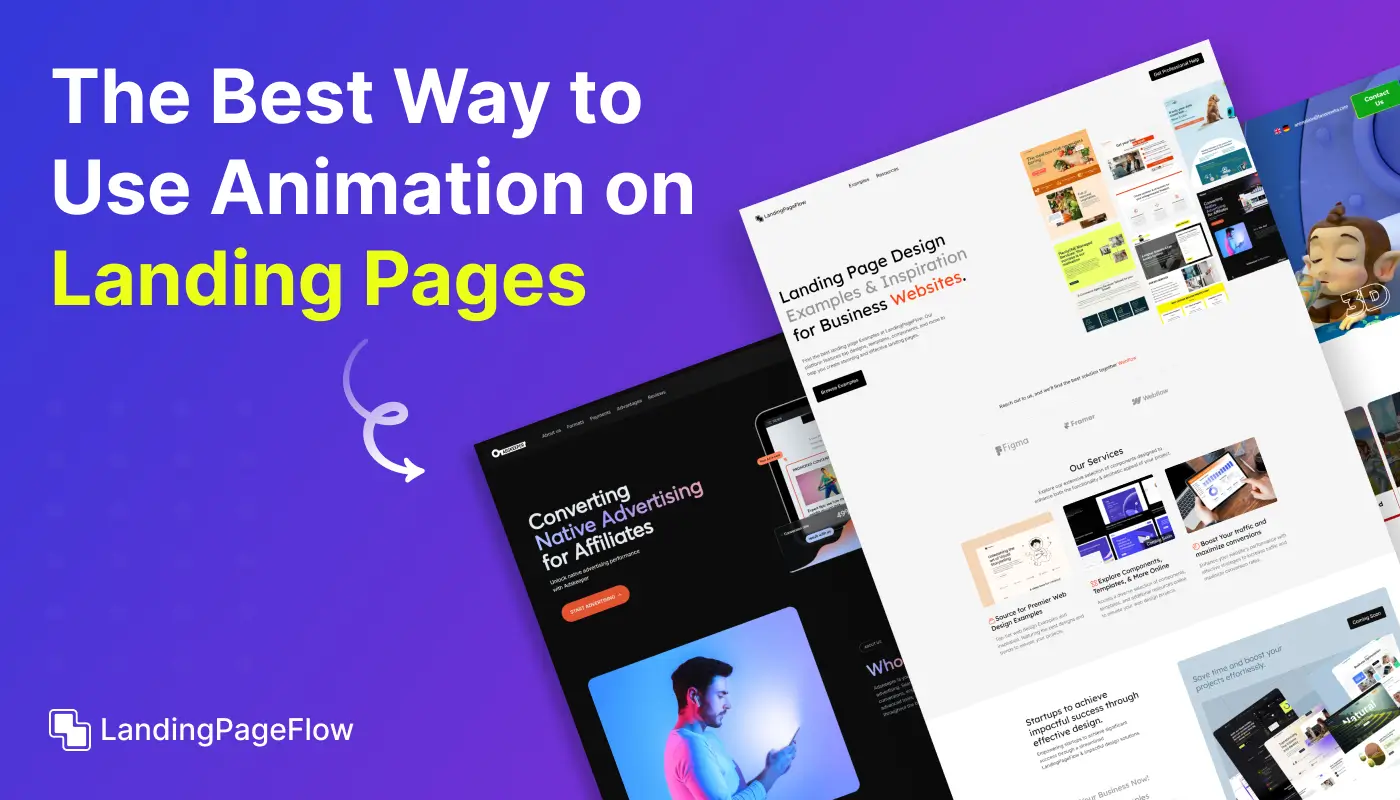How to Create a High-Converting Landing Page on Mailchimp

November 18, 2025
Mailchimp has become a go-to platform for businesses that want to combine email marketing and landing page design in one streamlined system.
Creating an effective landing page here is not just about placing text and images but about aligning design with conversion-focused strategies.
Many businesses fail because they overlook the importance of structured layouts, persuasive calls to action, and engaging visuals.
Starting from clear messaging to intuitive navigation, every element on your Mailchimp landing page needs to guide visitors toward the action you want them to take.
Strong visuals, compelling copy, and mobile responsiveness are critical if you want users to stay longer and engage with your offer.
A landing page in Mailchimp should also focus on speed, simplicity, and value delivery, ensuring the message resonates clearly without distractions.
"Thinking about leveling up Mailchimp pages?
Secure your free strategy guide today & maximize every visitor interaction."
Table of Contents
- Why Use Mailchimp For Landing Pages?
- Key Elements of a High-Converting Landing Page
- Step-by-Step Guide to Creating a Mailchimp Landing Page
- Best Practices For Optimizing Your Mailchimp Landing Page
- A/B Testing For Improved Performance
1. Why Use Mailchimp For Landing Pages?

Seamless Integration with Email Marketing
Mailchimp is primarily known for its email marketing capabilities. However, it has expanded into landing pages, offering an intuitive platform that integrates seamlessly with email campaigns.
If you’re already using Mailchimp for newsletters, automated emails, or drip campaigns, you can easily connect your landing pages with your email lists, allowing you to nurture leads right from the start.
User-Friendly Interface
One of Mailchimp’s key strengths is its drag-and-drop editor, which makes designing landing pages easy, even for beginners.
You don’t need coding skills or a design background to create visually appealing and functional pages.
The platform offers templates that can be customized to fit your branding and marketing objectives.
Templates and Customization
Mailchimp offers a variety of pre-built templates for landing pages, which can save time and effort.
Whether you’re promoting an event, launching a product, or running a lead generation campaign, there’s a template for it.
Plus, the editor allows you to easily modify every element on the page to align with your brand’s colors, fonts, and style.
Built-in Analytics
After your landing page is live, Mailchimp’s built-in analytics help you track performance metrics such as page views, conversions, and sign-ups.
This data is crucial for making data-driven decisions to improve your marketing strategies.
2. Key Elements of a High-Converting Landing Page

Creating a landing page that converts well involves more than just slapping together some text and images. Every element on your page needs to work together to drive visitors toward your desired action—whether that’s signing up for a newsletter, downloading a guide, or purchasing a product.
Here are the key elements your Mailchimp landing page must include:
A. Clear and Compelling Headline
The headline is the first thing visitors see when they land on your page. It should immediately grab their attention and communicate the value of your offer. Avoid vague or confusing language. Instead, make it clear, concise, and focused on the benefits to the visitor. For example:
- Weak: “Sign Up for Our Newsletter”
- Strong: “Get Exclusive Tips to Grow Your Business – Join Our Free Newsletter Today!”
B. Strong Call-to-Action (CTA)
Your CTA is one of the most important elements of your landing page. It should be clear, actionable, and easy to find.
Use action-oriented language like “Get Started Now,” “Download Your Free Guide,” or “Claim Your Discount.” The CTA button should also stand out visually, using a contrasting color to draw the visitor’s eye.
C. Engaging Visuals
Images, videos, and graphics can increase engagement and break up text-heavy pages.
Use high-quality visuals that support your message. If you’re promoting a product, include images that show the product in use.
If you’re offering a free guide or resource, use a mock-up to show what visitors will receive.
D. Social Proof
Social proof is a powerful tool for building trust. Incorporate testimonials, case studies, or reviews from customers who have benefited from your offer.
Logos of well-known brands you’ve worked with can also provide social proof and lend credibility.
E. Concise and Persuasive Copy
The copy on your landing page should be concise and to the point. Avoid lengthy paragraphs and focus on clearly communicating the benefits of your offer.
Break up the text with bullet points, subheadings, and short paragraphs to make it easy to read.
F. Mobile Optimization
With more than half of internet traffic coming from mobile devices, your landing page must be mobile-optimized. Fortunately, Mailchimp’s templates are responsive, meaning they automatically adjust to different screen sizes.
However, it’s still a good idea to test how your page looks on mobile before publishing.
3. Step-by-Step Guide to Creating a Mailchimp Landing Page

Step 1: Login and Navigate to the Landing Page Section
- After logging into your Mailchimp account, go to the “Campaigns” tab on your dashboard.
- Click “Create Campaign,” then choose “Landing Page” from the options.
Step 2: Set a Goal for Your Landing Page
Mailchimp will prompt you to select a goal for your landing page. This could be generating leads, promoting a product, or driving traffic to your website. The goal you select will help guide your design and content choices.
Step 3: Choose a Template
Mailchimp offers a variety of templates designed for different goals. Choose a template that aligns with the purpose of your landing page.
For example, if you’re collecting email sign-ups, you might choose a lead generation template, whereas if you’re promoting an event, you could opt for an event-specific design.
Step 4: Customize the Design
Once you’ve selected a template, you can start customizing it to fit your brand.
- Upload your logo and images: Add your company logo and any relevant images to make the page visually appealing.
- Edit the text: Customize the headline, subheadings, and body text to communicate the value of your offer. Remember to use clear, benefit-oriented language.
- Add a form: If your goal is lead generation, add a sign-up form. Mailchimp allows you to customize the form fields to capture the information you need, such as name, email address, or phone number.
Step 5: Add a Strong Call-to-Action (CTA)
Make sure your CTA stands out on the page. Use a contrasting color for the CTA button, and place it in a prominent location where visitors will see it immediately.
Be direct and specific with the action you want them to take (e.g., “Get Your Free Guide,” “Subscribe Now,” “Claim Your Offer”).
Step 6: Preview and Test
Before publishing, use Mailchimp’s preview feature to see how your landing page will look on different devices. Make sure all links, CTAs, and forms are working correctly. Check the mobile version to ensure it’s optimized for small screens.
Step 7: Publish Your Landing Page
Once you’re satisfied with your landing page, click “Publish.” Mailchimp will generate a unique URL for your page, which you can share via email, social media, or other marketing channels.
4. Best Practices For Optimizing Your Mailchimp Landing Page

A. Use Urgency and Scarcity
Encourage visitors to act quickly by creating a sense of urgency. Time-sensitive language like “Limited Time Offer” or “Only a Few Spots Left” can push visitors to take action now instead of later.
B. Simplify the Page
Avoid cluttering your landing page with unnecessary elements. Focus on a single goal, whether it’s collecting emails, selling a product, or getting registrations. Remove distractions like navigation menus or links that take users away from the page.
C. Keep the Copy Focused on Benefits
When writing the copy for your landing page, focus on the benefits of your offer. Explain how your product, service, or resource will solve a problem for the visitor or make their life easier. Keep the language simple, clear, and persuasive.
D. Use Contrasting Colors for Your CTA
Your CTA should stand out visually from the rest of the page. Use a contrasting color for the CTA button to make it pop. For example, if your page uses a lot of blue, consider using a bold red or orange button for the CTA.
E. Optimize for Mobile
Ensure your page looks great on mobile devices. With Mailchimp’s responsive templates, your landing page will automatically adjust to different screen sizes, but it’s still a good idea to double-check the mobile version before publishing.
5. A/B Testing For Improved Performance

A/B testing, also known as split testing, is a great way to identify which elements of your landing page are working and which ones need improvement. Mailchimp allows you to run A/B tests on different versions of your landing page to see which one performs better.
How to Set Up an A/B Test on Mailchimp:
- Create two versions of your landing page with one or more elements changed, such as the headline, CTA, or images.
- Split your traffic between the two versions to see which one converts better.
- Analyze the results using Mailchimp’s analytics dashboard to determine which version performed best.
- Implement the winning version to maximize conversions.
Conclusion
Crafting a high-converting Mailchimp landing page requires a careful balance of creativity and strategy. Businesses that pay attention to design flow, copywriting, and usability often experience better engagement and stronger conversion rates.
Conversion does not come from design alone but from the combined power of clear messaging, persuasive structure, and testing for improvements.
Brands that continuously adapt their pages based on analytics see higher returns from their marketing spend.
Small details such as CTA placement, color choices, and form simplicity can significantly influence visitor decisions. Every click and every second counts in shaping the outcome of your landing page.
In the long run, investing time into refining your Mailchimp landing page strengthens both short-term sales and long-term customer loyalty.

FAQ
1. Can I create a landing page directly in Mailchimp without coding?
Yes, Mailchimp provides a drag-and-drop builder that allows you to create professional landing pages without needing technical or coding knowledge.
2. How do Mailchimp landing pages integrate with email campaigns?
Landing pages connect seamlessly with your Mailchimp audience lists, allowing you to capture leads and trigger automated campaigns instantly.
3. What elements make a Mailchimp landing page convert better?
Clear headlines, persuasive CTAs, engaging visuals, fast load speeds, and trust elements like testimonials significantly improve conversions.
4. Can Mailchimp landing pages be optimized for mobile devices?
Absolutely, all Mailchimp landing pages are mobile-responsive, ensuring users have a smooth experience regardless of the device they use.
5. How can I track the performance of my Mailchimp landing page?
You can monitor metrics such as visits, conversions, and bounce rates directly from Mailchimp’s analytics dashboard to make data-driven improvements.
6. Are Mailchimp landing pages suitable for e-commerce businesses?
Yes, Mailchimp integrates well with e-commerce platforms, making it possible to create product-specific landing pages that drive sales and collect leads.



















